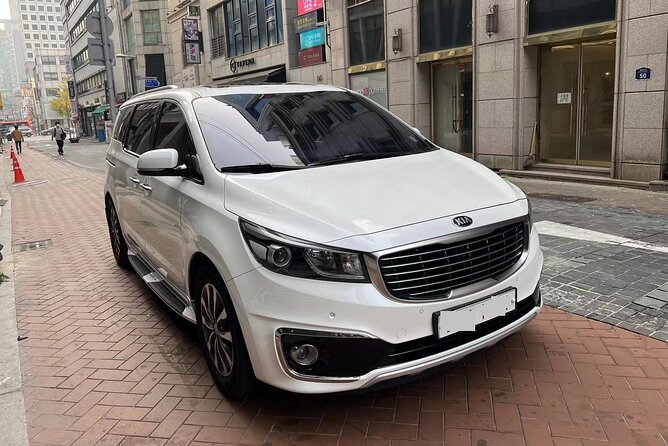Best Binoculars for Astronomy
If you’re just getting started in your astronomy exploration, then a good set of binoculars might be exactly what you need. Whilst many think that you need a super powerful telescope to have any success with astronomy, this couldn’t be further from the truth. In some cases, a decent set of astronomy binoculars might actually be the better choice.
Using binoculars for astronomy won’t give you the power you need to see planets in close up detail. But, it can give you a wide angle view of the entire night sky, which can be good for getting to grips with different constellations. They can be a great lightweight alternative to a travel telescope.
Best Binoculars for Astronomy
So, which astronomy binoculars should you consider when you’re trying to find a good pair? Well, there are a few different sets of binoculars on the market which would make a good choice. Let’s run through some of the best binoculars for astronomy. Hopefully, then you’ll be able to find exactly what you want.
Before you purchase a pair of binoculars for astronomy, you should first consider whether you want a pair of binoculars you can hold in your hands, or a set that will be mounted.
Generally, the easiest way to do this is to look at the magnification of each set of binoculars. Binoculars with a lower magnification will be much more suited to being handheld, as they don’t need to be as steady.
However if you’re using a set of binoculars with a higher magnification, then you will probably need to use a tripod with them to keep them steady. Otherwise, you won’t be able to get a good view if you aren’t going to stay stable enough. This is the same way telescopes need a mount, and low magnification spotting scopes can be used handheld.
Anyway, I’ll give you some great options whether you’re a beginner or you’re looking for something more advanced.
Orion Scenix 10×50
Sale
” alt=”Scenix 10×50 Wide Angle Binos” data-ezsrc=”https://odysseymagazine.com/ezoimgfmt/m.media-amazon.com/images/I/51P9Y4PO7TL.jpg” />
Scenix 10×50 Wide Angle Binos
- Ten-power binoculars with substantially wide 50mm objective lenses perfect for astronomy and/or long-distance terrestrial viewing
- Top-quality BAK-4 porro prisms and multi-coated objective lenses ensure bright, crisp images high in contrast
- Wide 7-degree field of view and 16 foot close focus lets you inspect nearby birds and wildlife with 10-power magnification in a nice wide view
If you want a pair of binoculars that you can use handheld, then you’ll want them to be 10x magnification or less. If you want binoculars for more detailed viewing, then check out the other binoculars I’ve listed for this.
In terms of handheld binoculars, this set are some of the best around for their price. They’re reasonably priced enough to be used by beginners, but that doesn’t mean that they’re lacking in quality.
The multicoated 50mm lenses help to ensure that you can get an image that’s bright enough for astronomy, and combining this with the BAK4 prisms ensures enough contrast to be able to make out some detail.
Why do I recommend this set above other 10×50 binoculars? Well firstly, they’re very light, which makes them easy to carry and hold for a good while. Secondly, the multicoated lenses will give you a bright enough view of many stars and nebulae in the night sky. And thirdly, they’re well priced so that most people can afford a set.
So if you’re looking for the best deal on astronomy binoculars, then I’d advise that you check out these 10×50 set of Orion Scenix. They’re perfect for those who want to skim through the night sky and see what’s up there.
Celestron Cometron 7×50 Binoculars
Sale
” alt=”Celestron – Cometron 7×50 Bincoulars – Beginner Astronomy Binoculars – Large 50mm Objective Lenses – Wide Field of View 7x Magnification” data-ezsrc=”https://odysseymagazine.com/ezoimgfmt/m.media-amazon.com/images/I/31zPva1weyL.jpg” />
Celestron – Cometron 7×50 Bincoulars – Beginner Astronomy Binoculars – Large 50mm Objective Lenses – Wide Field of View 7x Magnification
- EASY-TO-USE ASTRONOMY BINOCULARS FOR BEGINNERS: Cometron 7×50 binoculars are an easy, affordable way to learn the night sky and get started with astronomy.
- 7X MAGNIFICATION: With their wide field of view that reveals a larger portion of the night sky, Cometron is ideal for panning across the Milky Way, exploring constellations, and viewing large objects like comets.
- 50MM OBJECTIVES WITH MULTI-COATED OPTICS: Large objective lenses gather more light while multiple layers of anti-reflective coatings boost light transmission. Views are bright and detailed with increased contrast and resolution.
For beginners who are new to astronomy and don’t want to invest a lot of money, then it would make sense to pick up a cheap pair of Celestron Cometron binoculars. They’re super affordable so no matter what your budget is, you should be able to pick up a pair of these multi coated binoculars.
This is a set of binoculars with a very low magnification. This means that you won’t be able to see planets or the moon in close up detail like you can with a telescope or high powered binoculars. However, they will provide you with some excellent wide angle views, which many people prefer. Whilst they won’t give you up close and personal views of celestial objects, they can be perfect for looking at the moon and stars with a wider field of view.
They have very wide exit pupils too, and their large objective lens enables this set of binoculars to gather quite a lot of light – perfect for astronomy, but also other activities like bird watching. Although they’re cheap, they’re actually fully multi coated. This makes a difference when it comes to optical performance, and will help to deliver bright images.
As well as being excellent for beginners, this set of binoculars could make a good accompaniment to use with a telescope. Their wide angle view would be perfect to use in tandem with a telescope, as their flexibility would enable you to spot any objects in the sky before setting your telescope up.
They’re a cheap pair of binoculars that will give you an idea of what the night sky looks like closer up. Of course, they’re a very cheap set of binoculars available at a great price, but they’re not going to be on the same optical quality level as other more expensive sets.
Zhumell 25×100 Tachyon Astronomy Binoculars
” alt=”Zhumell 25×100 Tachyon Astronomy Binoculars with Case, Black” data-ezsrc=”https://odysseymagazine.com/ezoimgfmt/m.media-amazon.com/images/I/41AH4R5LI0L.jpg” />
Zhumell 25×100 Tachyon Astronomy Binoculars with Case, Black
- Giant 100mm objective lenses for deep-space bino-astronomy use
- Fully multi-coated lenses
- BaK4 prisms provide excellent light transmission
If you are looking for a higher magnification pair of binoculars, then you can look at this Zhumell Tachyon set. Just keep in mind that they’ll be next to impossible to use handheld, so you’ll need to get a tripod to use them with (if you haven’t got one already!).
You will be able to feel the difference in quality between this set and cheaper sets pretty instantly, as they’re made from a higher quality metal as opposed to cheaper materials. This helps to make them waterproof so you don’t need to worry about taking them outside with you. They’re definitely a well made set of binoculars, though they may prove to be a bit bulky for some.
These Zhumell binoculars use BAK4 glass, as opposed to the standard BK7 you’ll find in the majority of cheaper binoculars out there. This will enable you to get a crisper view, and you can tell the difference by just looking at the exit pupil – BAK4 binoculars has a circular exit pupil, whilst when you’re looking down BK7 binoculars you can see that they’re a more diamond shape.
So if you are looking for a set of giant binoculars that you can use with a tripod for some higher magnification viewing, then this Zhumell pair could be the right set for you. They’re not massively expensive, but they provide some good quality and they’re definitely a step up on most budget binoculars available.
Orion 15×70 Astronomy Binoculars
” alt=”Orion 15×70 Astronomy Binoculars with Tripod Adapter (Black)” data-ezsrc=”https://odysseymagazine.com/ezoimgfmt/m.media-amazon.com/images/I/41CuKB++ZDL.jpg” />
Orion 15×70 Astronomy Binoculars with Tripod Adapter (Black)
- This 15 power astronomical binocular with big 70mm lenses excels at high power viewing of the cosmos
- High-quality BAK-4 porro prisms, fully multi-coated optics, and internal baffles provide clear, crisp views
- See the moons of Jupiter, craters and mountains of the Moon, and hundreds of deep sky objects
If you are looking for a cheaper set of higher powered binoculars, then this Orion 15×70 set is going to be perfect for you. They come with a tripod adapter, which should make them easy to attach to any tripod you want or already have.
The 70mm objective lenses combined with the 15x magnification in this set of binoculars make them perfect for wide to midrange viewing – you should still be able to make out some details of deep sky objects. They also have a very long 18mm eye relief, which makes them ideal for anyone that wears glasses.
Even though this is a cheaper set, they still use the same high quality BAK4 porro prisms that are usually used by much more expensive binoculars. BAK4 are the better quality of porro prisms, but they still manage to keep the cost of the binoculars within a reasonable price range.
Whilst 15×70 aren’t the highest powered binoculars around, they will probably still be too powerful for you to use handheld – they’re also very heavy, so definitely not suited to holding them for long periods of time. However, you can pick up a cheap tripod for a low cost nowadays, so this isn’t too much of a worry.
This set of Orion binoculars provides us with another option for those looking to get some great wide views of the night sky. They should be more than powerful enough to get some good views of star clusters, the Milky Way and other objects in our solar system.
What to Look for in a set of Astronomy Binoculars
When you’re buying a set of binoculars, it can be difficult to know exactly what you should be looking for. Fortunately, once you know what to look for, it’s much easier to make a decision. Here are the things you should be considering when you buy a set of binoculars for astronomy.
Magnification & Lens Sizes
The most important and commonly misunderstood thing about binoculars is their magnification. Many people see a set of 10×80 binoculars and have absolutely no idea what these numbers are referencing.
In this instance, the 10 (first number) is the magnification of the telescope. So quite simply, when you look through the lenses, it would be 10x magnified than what you would normally see. Obviously, a pair of 15×60 binoculars would have a magnification of 15x.
The 80 (second number) refers to the size of the objective lens in the binoculars, so 10×80 binoculars have an 80mm objective lens. The objective lenses allow your binoculars to gather light. The larger the objective lens, the brighter your view will be.
It worth mentioning as well that when you divide the objective lens size by the magnification, you get the exit pupil size (80/10=8mmm). Having a larger exit pupil size can be an advantage for those looking at the night sky, so it’s especially good for astronomy.
Prisms
When you’re purchasing a set of astronomy binoculars, you’ll need to consider which sort of prisms you’re going to need. Most binoculars use porro prisms, and they’re probably the best bet for most people, as they’re very affordable.
Porro prism binoculars are bigger and bulkier. This is because they’re designed to use two reflective prisms to produce an image, which is actually inverted due to the way the prisms are aligned.
With Roof prism binoculars, the path is more complex than with Porro prisms. They are a lot more difficult to make, so they are generally more expensive. However, they are more compact, so if you’re looking for some small binoculars, they may prove to be a better choice.
Eye Relief
This is something to think about if you wear glasses, as if you have a short eye relief set of binoculars, you may not be able to use them properly with your specs on. So, it’s worth looking at the eye relief of a set of binoculars before purchasing them.
If your binoculars have 8mm eye relief, then this is particularly short and not good for people with glasses. A larger eye relief would probably be needed, preferably more than 10mm.
Most commonly Asked Binocular Questions
Are 10×50 binoculars good for astronomy?
If you’re wondering what size binoculars to get for astronomy, then it’s probably worth starting out with some cheap ones. Typically, there are an abundance of 10×50 models out there to choose from, so this is probably a good place to start. If anything, even less magnification might be better for new astronomers.
Why are 10×50 binoculars more expensive than 20×50?
Many people think that the higher the magnification of a set of binoculars, the more expensive then will be. However, this isn’t always the case, and actually, a set of 20×50 might not be the best choice anyway. Binoculars with high magnification are very difficult to keep steady, and typically need a tripod to be used with them. So, you can often find 10×50 binoculars more expensive than 20×50 binoculars, as they’re far more popular.
What can I see with my astronomy binoculars?
If you’re never unsure of what to look at with your astronomy binoculars, it’s a good idea to start with the moon. You should be able to identify the maria on the moon, which are gray plains caused by past volcanic eruptions. You can also try and explore different constellations.
What is the best brand of astronomy binoculars?
Like with telescopes, for beginners you really cannot go wrong with sticking with Celestron, who are the most well known astronomy brand. You can also look at other brands like Oberwork, and even brands like Canon and Nikon also produce some good binoculars too.
How much should I spend on astronomy binoculars?
The correct answer to how much you should spend on a pair of astronomy binoculars really depends on your experience. If you’re a beginner, then opting for a $50-100 pair of low magnification (7-10x) binoculars is probably best. If you have more experience, then you can opt for something more powerful and more expensive.
The Wrap Up
Astronomy binoculars are a great way to get some awesome wide angle views of the night sky without seeing things in great detail. They can be the perfect place to start for beginners, and in some cases, better than a telescope. You don’t need to worry about spending tons of time aligning your scope, and you can take them with you anywhere very easily.
However for most people, the best choice would be to have a combination of the two together. So, don’t forget to check out the best telescopes selection that I’ve made for astronomers too. If you have any suggestions for astronomy binoculars, please leave a comment!



